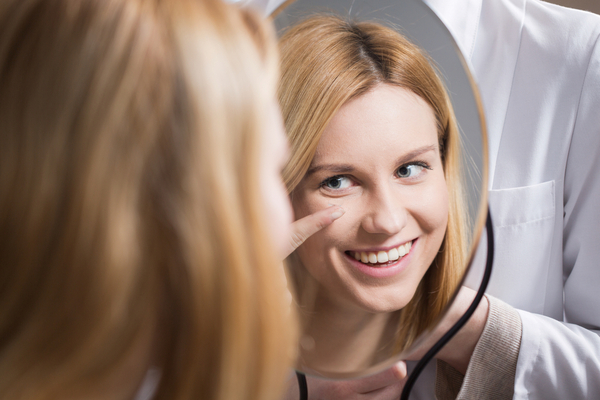Contact lenses have come a long way in a short time, which is why you can have a pair of golden tigers today and wear baby blues tomorrow. You may even opt for disposable lenses that you toss in the trash after use. If you have vision problems you need to correct, contact lenses are both effective and invisible, making them preferable to traditional glasses. If you are considering buying a pair, this piece explains every detail concerning contact lenses.

What are Contact Lenses?
Contacts are thin, curved lenses that you place on the film of tears covering your eye’s surface. You can wear them for cosmetic or therapeutic reasons. Since they give the user more natural vision than glasses and move with your eye, nothing blocks what you see. The thin plastic lens fits over the cornea to help fix vision issues like astigmatism, nearsightedness, presbyopia, and farsightedness.They also don’t get wet or foggy during cold days, making them perfect for playing sports. Thanks to technological advancements, now there are many comfortable options [1].
Five Tips for Selecting the Perfect Contact Lenses
1. Consult an Eye Doctor
Before diving into the market, consider talking to your doctor first. Since there is a range of available contact lenses, everyone can enjoy the benefits, irrespective of whether they are for therapeutic or recreational reasons. Whichever the case, contact lenses should be prescribed and fitted by an eye care specialist. Like any medical device or drug, contacts are monitored by the United States Federal Drug Administration. Remember that the paramount factor is how well you can follow the manufacturer’s directions and your eye doctor’s guidelines.
2. Which Contact Lens is Right for You?
After consulting the doctor and agreeing to contact lenses, you should work together to find the right fit. The eye doctor will assess your lifestyle and eyes before recommending a specific type for you. However, you should also understand the process so that you can make the right decision. Contacts can either be soft or hard. Although the former type is the most popular alternative, some patients experience better visual results using rigid gas-permeable lenses [2].
Benefits of rigid contact lenses
- A sharper vision than soft lenses
- Better visual clarity
- Preferable for some users with presbyopia
- Enhanced clarity and fit for users with cone-shaped corneas
Benefits of soft contact lenses
- Usually more comfortable
- Easy to adjust than the rigid type
- Several lens types to meet your needs
3. What is Your Preferred Duration?
Are you planning on wearing the contacts daily or on special occasions only? Understanding the frequency of your needs will help you settle for the most appropriate lens.
Daily disposable lenses
They will cost you more money because of the increased frequency at which you dispose of them. However, changing your lenses often minimizes your chances of getting infected. The lenses are a perfect option for allergy-prone individuals and those with dry eyes. Since you have a new less daily, allergens and deposits have less time to build up. [3]
Monthly/weekly disposable lenses
The option is not as costly as daily disposables and still reduces the infection risk by getting new lenses every few weeks. Some disposables can be replaced every three months. Remember to consult your optometrist.
4. Determine How Important Vision Sharpness Is
Although any contact lens will improve your vision, rigid lenses are generally known to offer sharper sight than their counterparts. Users who have astigmatism are likely to benefit from using rigid lenses, which is why they should consider this factor. However, people who don’t suffer from this condition can also wear them. Ensure that you try out a range of soft and rigid lenses before settling on the one with the sharpest vision. [4]
5. Decide Whether UV Protection Is Vital
If you are frequently involved in sporting activities, contact lenses are perfect because you don’t have to worry about damaging them like eyeglasses. In case you spend a lot of time outdoors or engage in outdoor sports, you may want to purchase lenses with UV protection. Since not all contacts have UV protection, you need to consult with your optometrist regarding your preferences.
Conclusion
Cleaning your soft or rigid lenses every day is required, besides the daily disposable type. Improper care of your contacts might result in a host of vision issues such as bacterial infections, fungal infections, and corneal ulcers. Remember to research further and consult with an eye doctor before buying contacts.
- “How to Find the Right Contact Lenses.” WebMD. January 10th, 2021. https://www.webmd.com/eye-health/contact-lenses-colored-soft-hard-toric-bifocal#2.
- “Soft vs. Rigid Contact Lenses.” University of Iowa Hospitals & Clinics. January 9th, 2021. https://uihc.org/health-topics/soft-vs-rigid-contact-lenses.
- “Types of Contact Lenses.” USA Food and Drug Administration. January 11th, 2021. https://www.fda.gov/medical-devices/contact-lenses/types-contact-lenses.
- “Types of Contact Lenses.” American Optimetric Association. January 11th, 2021. https://www.aoa.org/healthy-eyes/vision-and-vision-correction/types-of-contact-lenses?sso=y.
